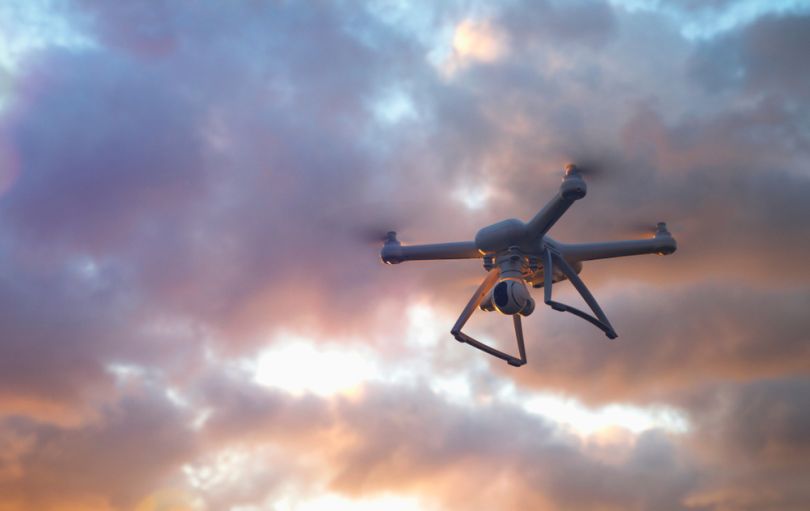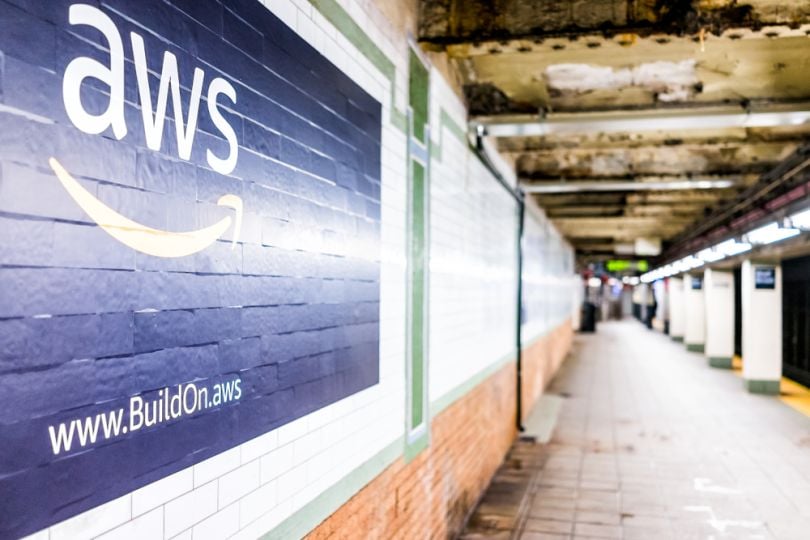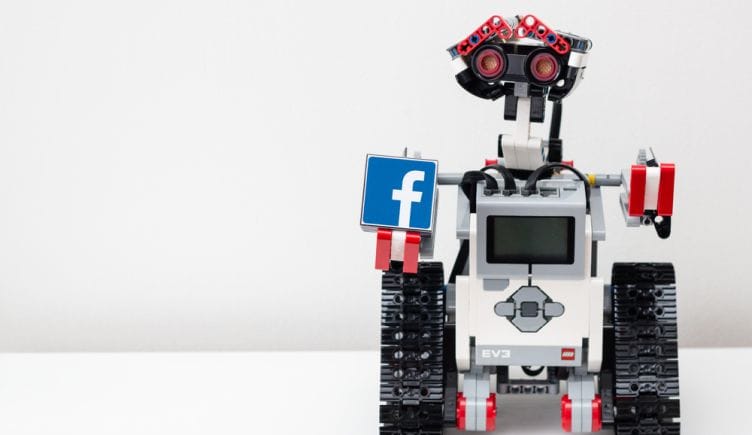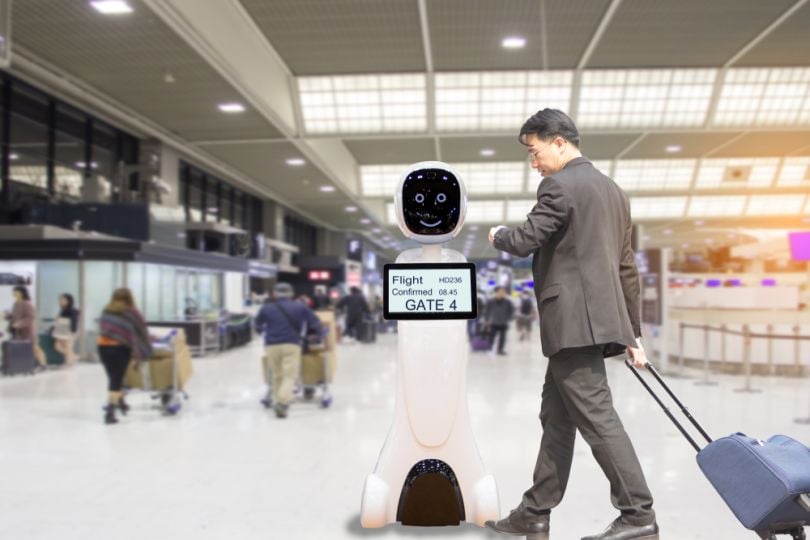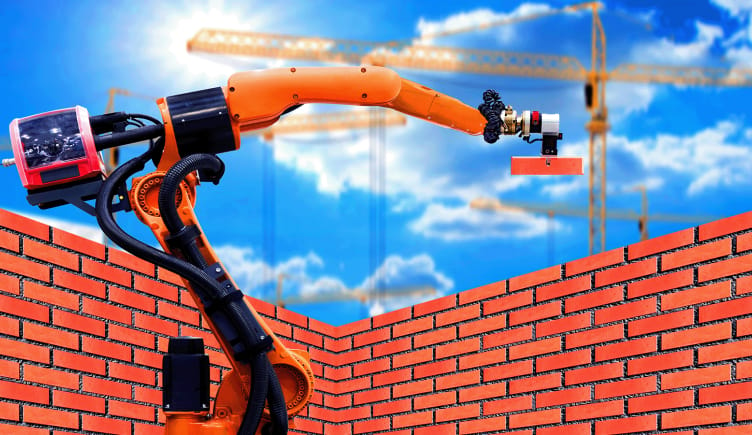 Image: Shutterstock
Image: Shutterstock
Imagine everything going right on a construction site. Labor shortages, supply chain constraints, weather forecasts, angry neighbors — poof. Gone. And all there’s left to do is build. Everything, for once, is under control.
But in the construction industry, where there’s so much potential for so much to go so wrong, control is a fleeting concept. The only things that go poof on a jobsite, seemingly, are time and money.
Over the last two and a half years, the construction industry in the United States has been plagued by rising labor and material costs, climate change, health and safety concerns, and the pandemic — all of which have contributed to what’s estimated to be a nearly 8 percent decline in productivity.
But even in the decades leading up to today’s lag, construction companies still had to contend with a series of challenges threatening efficiency and output: A 2017 report from the consulting firm McKinsey found that annual growth in productivity in the construction industry has been in decline for nearly 50 years.
Robots Working in Construction Today
- TyBOT — a rebar-tying robot that can tie 1,100 intersections in an hour. It’s typically used on large bridge projects.
- Dusty — a robot that prints layouts on construction surfaces. It replaces manual chalk line crews, working five times as fast.
- Canvas — automates the drywall finishing process. It’s been used on projects at the San Francisco International Airport and Chase Arena Towers.
While other industries have embraced robotics and advanced automation tools to boost productivity, the idea of robots coming onto the jobsite has been a touchy subject in the construction industry, one fueled by high startup costs and fear of displaced workers.
But in the last few years, robots have started to peek over the jobsite fence, taking over some of the most repetitive, back-breaking work that not only slows crews down, but also injures them. Thanks to an influx of cash from private equity firms and advances in technology, robots are slowly alleviating some of those concerns and could be key to the industry one day meeting global infrastructure and building demands.
More on Robotic Innovation35 Robotics Companies on the Forefront of Innovation
Robots Are Taking Over ‘Backbreaking’ Construction Work
Other sectors don’t deal with nearly the same level of challenges as construction — an industry that’s highly regulated, cyclical and forced to work at the whim of public sector demand, according to analysts. But the construction industry, historically, has been hesitant to take steps, like embracing robotics, that could provide a hedge against the draining effects of these external forces, leaving an estimated $1.6 trillion in value on the table each year, according to McKinsey’s 2017 report.
But there are people within the industry, like Jeremy Searock, co-founder, president and chief technology officer at Advanced Construction Robotics, a robotic equipment firm based in Pittsburgh, Pennsylvania, who are attempting to close that gap. In Searock’s case, specifically by automating one of the most repetitive and grueling jobs in the industry — tying rebar, the steel bars used to reinforce concrete together where they intersect.
“Rebar installation is one of those jobs that’s just just backbreaking — it just truly breaks people,” Searock told Built In.
To tie rebar, say on a large bridge project, workers bend over with a roll of wire at their hip, and use pliers to tie intersections together all day for months on end.
But the work’s repetitive nature also lends itself to automation.
“From a technology perspective, we could look at it and say, ‘Yes, this is a very solvable technical problem,’” Searock said. “‘And so solvable that we think we could take this idea through to a commercial project.’”
Within a year, Searock and his team had a commercial rebar tying prototype, TyBOT, out in the field working on a bridge project. And now, nearly five years later, Advanced Construction Robotics has a fleet of nine TyBOTS working on projects, tying 1,100 intersections an hour — or 36,000 in a single work week — which is equivalent to what four to six workers can accomplish, according to Searock. In May, it even set a record for tying more than 11,000 intersections in a single shift.
The company is also developing a new rebar placing robot, IronBOT, currently in its final testing phase, according to Searock. The robot is capable of carrying and placing 5,000-pound bundles of rebar, another back-breaking task ripe for automation.
New Tools to Enhance Safety, Quality and Productivity
In 15 years, Searock believes we’re all going to look back one day and ask ourselves, “Why in the world did we have 10 people bent over every day literally hurting themselves tying rebar together?”
But Searock knows adoption will take time.
“Our focus is to bring these products to construction, quickly, reliably, safely and as socially acceptable as we can because our end goal is we want to change construction,” Searock said. “We truly believe that this technology and robotics is a beneficial thing that construction needs and wants. They just don’t all see it yet.”
Henning Roedel, the robotics lead at San Francisco-based DPR Construction, a commercial contractor and construction management firm, sees it.
Roedel told Built In he’s currently looking at 15 new technologies, all of them robotics designed for use in construction.
When he joined DPR in 2019 as West Coast innovation lead, Roedel was tasked with scouting new technologies across 13 categories, including robotics. “There were a couple of robotics companies that came out that all of a sudden just blew us out of the water in terms of the impact on safety and quality and then productivity,” Roedel said. “It was like checking all the boxes.”
“I’m not looking for systems that are purely autonomous with no human intervention whatsoever … I’m interested in technologies that make the jobsite safer for individuals and make them more productive.”
As a result, Roedel started spending more time testing and conducting pilot programs, “just trying to push the technologies to their limits,” he said. Now, as robotics lead, Roedel oversees a division that’s capable of scaling a new technology across the company.
“I’m not looking for systems that are purely autonomous with no human intervention whatsoever,” Roedel told Built In. “I’m not interested in that type of technology. I’m interested in technologies that make the jobsite safer for individuals and make them more productive.”
One of the first robots Roedel and his team introduced to the jobsite was Dusty, a robot that uses building information modeling to print plans directly onto surfaces, replacing manual chalk-line layouts. It was a tool that DPR Construction initially conceived nearly a decade ago, but shelved. In pilot programs, Dusty worked five times faster than a traditional two-person layout crew.
On job sites, there’s definitely an energy around Dusty, Roedel said. People are taking notice of its speed and quality and clients are very interested in it, but Dusty, and its cohort of construction robots on jobsites today, have yet to make a measurable impact on the industry as a whole. According to Roedel, that’s still another five to 10 years away.
“I think we’re still in the really early stages,” Roedel said. “This is the first wave of new robots built specifically for our industry.”
For measurable impact, two things need to occur, according to Roedel. First, robots need to evolve from being task specific to more multipurpose. Today, they’re typically good at doing one job, while companies like DPR Construction are installing a million items in each of their building projects, Roedel said.
The industry also needs many more robots.
“There’s only so many robotic systems out there,” Roedel said. “We’re talking tens of robots, not thousands. And so for the construction industry — that’s over a trillion dollars here in the U.S. — we’re going to need thousands of robots to be built and circulating for measurable impact.”
More on RoboticsThe Future of Robots and Robotics
The Future of Construction Is Humans and Robots Working Together
Today, there appears to be a consensus around what’s possible for such a stagnant industry that’s trying to keep up with society. (“If it doesn’t, I think we’re in bigger trouble than we understand,” Roedel said.)
Watching Dusty and TyBOT work offers a glimpse of what the future of robotics in the construction industry could look like — a future where humans and robots work alongside one another to get more work done, quickly and safely, just as every other once-new tool, from the hammer to the steam shovel, has done for the construction industry.
It’s also poised to transform the workforce, potentially counteracting a worsening labor crisis by luring in new and younger talent comfortable with the video game-like controllers used to run these new robots, while keeping more seasoned workers plagued by injuries on the job, according to Roedel.
“They can’t work as they used to and they still want to contribute,” Roedel said. “They love building, they love being out on projects, so we can extend their careers.”
New technology will also lead to new roles on job sites, like the robot supervisors that are working alongside TyBOT. (“Who doesn’t want to grow up and run a robot?” Searock said.)
“It’s really a misconception that jobs can be lost because there’s simply not enough workers now to do the job … Something has to fill the gap.”
And while robots certainly have the potential to displace workers, that may be difficult to do considering the labor crisis, which is only predicted to get worse. The industry was short 375,000 workers in July, according to the U.S. Bureau of Labor Statistics.
“It’s really a misconception that jobs can be lost because there’s simply not enough workers now to do the job,” Searock said. “Something has to fill the gap.”
There’s also a new wave of investment being ushered in the construction industry, which could help. In May, Dusty Robotics announced $45 million in new funding.
“The construction industry, historically, hasn’t had [research and development] budgets,” Roedel said. “I think venture capital has really changed the game and I think we’re gonna see a huge change and increase in productivity, just because external investments are finally happening for innovating in our industry.”
When asked what new technology he would like to one day see on the jobsite, Roedel noted the need for robotic systems geared toward electrical work. “Literally just capping cables with terminals would be fantastic,” he said. “There’s just so much time and energy spent pulling copper through buildings and then terminating it. That to me seems like low hanging fruit.”
While all the new investments, innovations and labor implications associated with robotics and automation, all seem poised to boost productivity in the construction industry, it’s still unclear how quickly companies will adapt, adopt and introduce robots onto the jobsite, and whether a fear of displacing workers will make some industry leaders continue to hesitate, even if productivity and safety benefits are obvious.
“The work never goes away,” Roedel said. “It’s just how we interact with it that changes. And that’s true with all technologies and all automation. I still firmly believe we’re going to need people. There’s obviously an element of craftsmanship that goes into everything we build — any creative project. And if we lose that then I think the world would be a much more boring place.”
If the website content violates your rights, please contact us to delete it。



